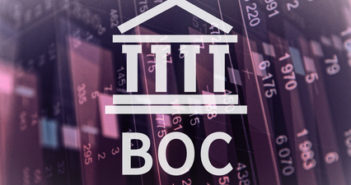- The Bank of Canada is set to leave rates unchanged but express concern.
- The Canadian economy is doing well but uncertainty is growing.
- USD/CAD may rise in the most likely scenario.
Snatching defeat from the jaws of victory – is one way to see the possible outcome of the upcoming decision by the Bank of Canada. The BOC is likely to convey a dovish message and may drive down the Canadian dollar.
Glass half full
The Canadian economy is doing well. The fresh Gross Domestic Product report has shown a growth rate of 3.7% annualized in the second quarter – far better than 2% in the US. Wages are rising at 4.5% YoY – significantly better than 2.1% in Canada’s southern neighbor.
Inflation has been rising at a satisfactory rate of 2% in YoY July – and so have core prices. Governor Stephen Poloz and his colleagues – which are charged with maintaining price stability – seem to have nothing to worry about.
Glass half empty
Not all is rosy in Canada. Starting from the GDP numbers, they have also shown that business investment has declined – similar to the US. And contrary to American consumers’ shopping spree – Canadian household spending has gone soft.
And while wage growth has picked up remarkably, the economy lost jobs in the past two months – albeit after several months of rapid hiring.
The BOC’s policy is based on future projections as well as the recent past. And here, it faces the same headwinds as every other country. The Ottawa-based institution is well-aware of the ongoing US-Sino trade war. Canada trades with China and heavily depends on American demand. As both economies suffer, the Canadian economy may struggle as well.
Canada has its own trade issues with the US. The USMCA – the new trade agreement that replaces NAFTA – has yet to be ratified by the parliament in Ottawa nor Congress in Washington.
The US recently threatened Mexico with tariffs if it would not satisfy demands regarding migrant flows. Both countries quickly reached a deal – but the easiness in which President Donald Trump drew the duties weapon has probably alarmed Canadian policymakers as well.
Moreover, the US Federal Reserve cut rates in July and is likely to do so again on September 18. It is rare to see a central bank in the developed world raise interest rates while the Fed is going in the other direction.
BOC and USD/CAD scenarios
1) Dovish message: All in all, the Canadian economy is doing well – justifying the current interest rate of 1.75% –or even a rate hike. However, significant worries may push the BOC to a more dovish statement, listing its concerns and downplaying the upbeat data – seeing the glass half empty.
In this scenario – which has the highest probability – the Canadian dollar is set to resume its falls, with USD/CAD moving higher.
2) Balanced message: The BOC may balance its message and lay out the positives and the negatives in the Canadian economy, with only a token reference to trade wars. In this case, the loonie may shake but refrain from trending in one way or another.
The scenario has a medium probability.
3) Hawkish message: Governor Poloz may focus on the bank’s mandate – price stability – and see the glass half full. The BOC may also note that rising wages can push inflation even higher.
Given everything said earlier, this scenario is highly unlikely and may send the C$ soaring – USD/CAD plunging.
Conclusion
The BOC is set to leave its rates unchanged at 1.75% on September 4 at 14:00 GMT and the bank’s accompanying statement is critical to the Canadian dollar’s response. A dovish message – especially due to high uncertainty rather than the current state of the economy – is the most likely scenario and could weigh on the loonie. Another scenario is a balanced sentiment that would keep USD/CAD stable, while the loonie may rise in the unlikely case of an optimistic outcome.
Get the 5 most predictable currency pairs
